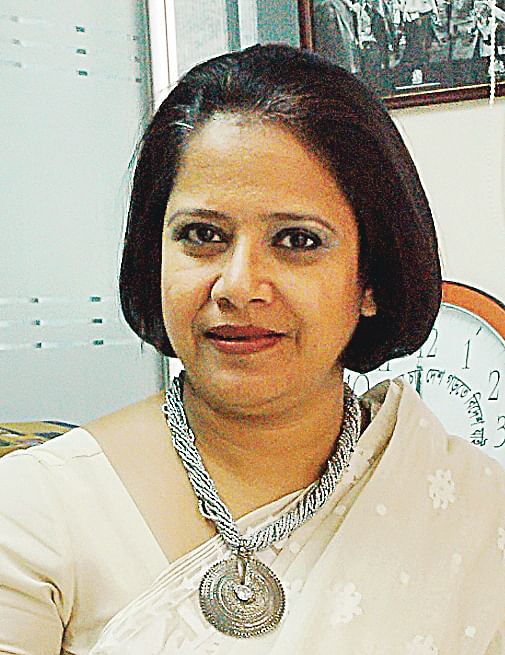
World Bank said remittance in 2020 would decline by one fourth of the previous year. But remittance increased, why?
WB said some $14 billion in remittance will come in 2020, but in reality the country received a total of $21.74 billion, 18.66 per cent higher than the previous year. Bangladesh has been able to manage the economy hit hard by the coronavirus better than many countries. Bangladesh Bank’s reserves stood at $42.97 billion in 2020. The amount was $32.68 billion in the previous year. That means the reserves increased by 31.49 per cent.
But these national statistics do not match the findings of the household survey conducted by Refugee and Migratory Movements Research Unit (RMMRU). Many said they had to suffered a lot as they did not receive any remittance. Those who had an expenditure of Tk 17,000 a month, spent only Tk 7,300 on an average. Families of 70 per cent of male migrants have had to rely on credit while one third of the families dependent on the income of female migrants have borrowed for survival. If the inflow of remittance increased significantly, why did the families of migrants suffer such hardships during the coronavirus. Why did they take loans? Their food intake fell. The foreign exchange reserve and the migrant realities do not match.
From where was the additional money remitted?
We have to find out that. The growth in the migration sector is 13-14 per cent in 7-8 years whereas the growth of remittance is 38 per cent in the first quarter of 2020-21 financial year (July-December). How did that happen? Overseas employment decreased, many of the migrants did not get wages, and many returned empty-handed. So the money was remitted through other means. The government allocated Tk 30.60 billion for incentive for the migrants. If a migrant sends Tk 100 through the formal channels, he or she will get Tk 102. On the one hand, the incentives declared by the government and on the other hand all the money remitted through the banking channels added to the exchequer. The hundi, an informal channel, was halted due to the coronavirus. There was an uncertainty among the migrants whether they would return home or remain stuck abroad. Will they be able to migrate again if they return home? Those who returned in fear of that and planned to return, they sent their savings through the banks. A large number of migrants returned home due to coronavirus. And their money has also been added to the remittance.
Can you explain about hundi further?
As per the findings of study, the inflow remittance of Bangladesh is now an industry of $40 billion. We are merely focusing on the formal channel. A big portion of remittance comes through the informal channels. The hundi business was not in operation due to the coronavirus. It is assumed that no money is required for visa, but the foreign employers sell work permits or visas to the agencies at high prices. The agencies sell those to the migrants at a further inflated rate. According to a survey by Bangladesh Bureau of Statistics (BBS), a total of $5,000 is spent for a visa. In normal times, some 700,000 new visas are required annually. But in 2020, as many as 217,000 people left the country for overseas jobs. About 483,000 visas were not bought. Some $1.47 billion was saved and the money was remitted through the formal channels. Besides, huge amount of money goes out through hundi to import gold. A major portion of gold is imported through smuggling. Smuggling also was halted. Moreover, a huge amount of money would go out through hundi for business purposes, which also remained halted due to coronavirus. Imports also were hit. As a result, dollars have been saved and money also remitted from the savings of the returnees. So the reserve shows higher. But this is not a normal scenario. These statistics do not prove our migration is in a good shape. The government should look into whether the remittance has actually decreased.
The money was remitted through the banking channels. According to Bangladesh Bank, the highest amount of remittance has come through Islami Bank 26.25 per cent, Agrani Bank 11.30 per cent, Dutch Bangla 8.99 per cent, Sonali Bank 6.62 per cent, and Janata Bank 4.42 per cent. As the increased amount of money has been remitted through the banking channels, the banks have been able to use it for tackling coronavirus. Remittance played a rescuing role during coronavirus.
How come the World Bank’s prediction was wrong?
In explaining remittance, there is another important matter and that is stock and flow. Stock means how many migrants are abroad now. Flow means how many migrants have migrated this year and how many have returned. Check and balance between stock and flow has to be taken into consideration. On the one hand, over 500,000 people could not go abroad for employment, and around 326,000 migrants returned home on the other. WB assessed the movement of workers during the COVID-19 period and made the prediction using the results of Spanish flu which occurred one hundred years ago. At present, the assessment will not be accurate as to how many could go abroad and how many returned. The prediction will be wrong. Different aspects of underground economy have to be taken into considered.
How many migrants have lost jobs during the pandemic and how many migrants face problems to get wages?
Between April-July of 2020, we have seen 47 per cent of migrants, who had jobs abroad, were not getting wages or getting delayed payments or getting partially paid. Some 26 per cent of migrants lost their jobs. Over 50 per cent of migrants were in crisis. Some 326,000 migrants returned home. But the situation of overseas has started improving.
How did the families of the migrants, who could not send money during the coronavirus, lead their lives?
It is necessary to assess first what per cent of the families depend on the remittance income to what extent. According to our survey, 57 per cent of the families would lead lives depending hundred per cent on wage earners’ income. Some 25 per cent of the families depend on 75 per cent of wage earners’ income. These families have passed miserable lives. It is noted that female migrants sent an increased amount of remittance during the COVID-19 period. Female migrants sent 69 per cent of their income while male migrants sent 30 per cent of their income. Some 60 per cent of families led by males lead their lives on credit. The families would spend Tk 17,000 a month and they now spend Tk 7,300. They have reduced the monthly expenditure by 57 per cent. This has had an impact on nutrition, education and agriculture, as many meet farm costs and loan installments from the wage earners’ income. Alongside COVID-19, many have faced difficulties due to floods and Amphan. The migrants who could afford sent an increased amount of money, more than in normal times. This is also one of the reasons that the country received the highest amount of remittance.
What sort of suffering did the migrants face, both those who went overseas and those who returned?
First of all, the migrants are considered as a threat in any sort of crisis and that has been proved again. They were not only at risk in the destination countries, but also they were at risk back home. The media in Kuwait and Saudi Arabia had campaigns that the migrants should be thrown into the desert as they cause to the spread of coronavirus and the country has to be purified by driving them away.
Prominent stars in the Middle East said so. Cashing on this opportunity, their governments sent back many migrants cancelling all of their contracts. They thought there was no work, but the migrants would still have to be provided with all facilities and health protection. During the coronavirus, they provided wages and other facilities to their own workers, but they did not do so for the foreign workers. As they would not give wages and other facilities, they spread propaganda in their media outlets to mobilise the public opinion so that they can save that money. Malaysia has done this the most. Even in our country, a section of private TV channels and intellectuals in the campaign against coronavirus made a call to cautiously deal with the migrants. We are calling this as securitisation, which is in fact treating migrants as offenders. For this, many migrants had to go to jail.
What was the role of the government for the migrants during the global calamity like COVID-19?
In the beginning the government warned the embassies and asked them to stand by the migrants. The government has allocated Tk 7 billion to give loans on four per cent interest for the rehabilitation of returnee migrants. On the contrary, the garments owners have been given loans on 2 per cent of interest. Roughly not above 400-500 migrants took loans. They said they would not take loans as they would not be able to invest. They said they want guarantee of livelihood. They said they are not entrepreneurs, they want employment. The government’s initiative for providing loan is a good one, but loans are not enough. They have to be given advice, training and opportunities.
Thank you
Than you too
*This interview, originally published in Prothom Alo print edition, has been rewritten in English by Rabiul Islam.









